Creating a shimmering metallic watercolor fish painting combines simple techniques with eye-catching effects. Using metallic paints adds sparkle and depth, making the fish appear vibrant and lively on the paper. This tutorial will show how to layer colors and work with metallic watercolors to achieve a glowing, dynamic fish painting.

The process is beginner-friendly, focusing on applying wet colors quickly and blending without waiting for each layer to dry. Adding metallic highlights enhances the artwork with shine, giving it a unique and attractive finish. Readers will learn how to balance color and shimmer for the best results.
By following easy steps, anyone can create a colorful fish that stands out with sparkling metallic details. This guide offers clear instructions on using these paints without overworking the paper, ensuring the shimmer stays bright throughout the painting.
Essential Materials for Metallic Watercolor Fish Painting
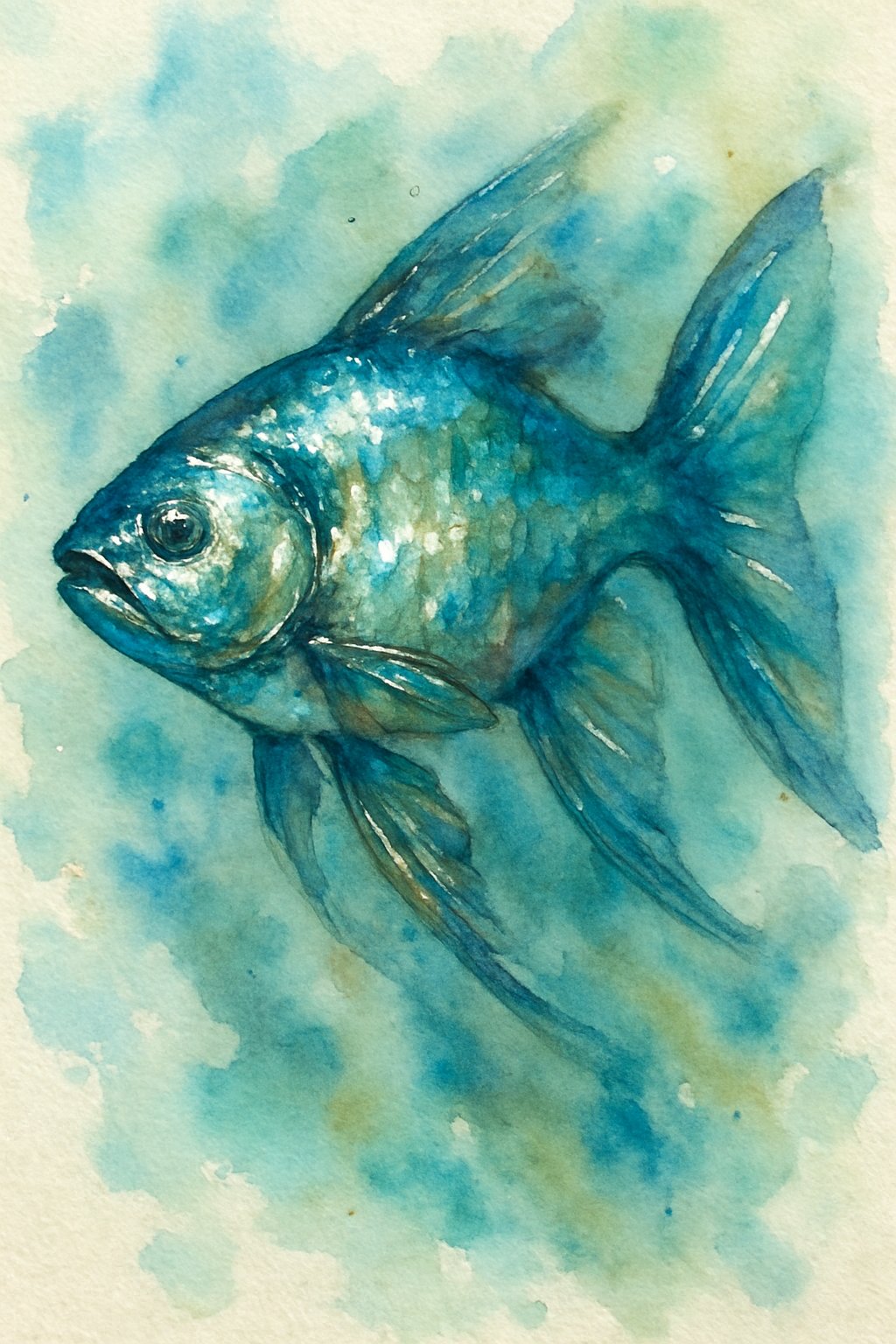
Creating a metallic watercolor fish painting requires specific supplies to achieve the right shimmer and detail. The choice of paints, paper, and brushes directly affects the final appearance and ease of working with this medium.
Choosing the Best Metallic Watercolors
Selecting high-quality metallic watercolors is crucial for a strong shimmer effect. Look for paints that contain fine metallic particles mixed smoothly into the watercolor base. These particles reflect light, giving the painted fish scales a sparkling look.
Metallic watercolor paint sets often include shades like gold, silver, bronze, and color-shift options such as blue-green or copper. Beginners should consider sets designed specifically for metallic effects, which provide consistent pigment and shimmer.
Metallic inks or liquid metallic paints can add extra shine but may require different handling. When using metallic watercolors, mixing them with regular watercolors can create subtle highlights and enhance depth in the fish’s body.
Selecting Quality Watercolor Paper
Using premium watercolor paper is essential for metallic paints. Metallic particles sit on the surface, so a smooth but absorbent paper helps retain the shimmer without dulling the effect.
A high-quality watercolor paper pad, ideally 140 lb (300 gsm), offers good durability and prevents warping during wet painting. Cold-pressed or hot-pressed paper impacts texture; hot-pressed paper is smoother, which can improve metallic paint reflectiveness for delicate fish scales.
Choosing a watercolor paper that allows smooth blending and fine detail work will help enhance the shimmering look. Quality watercolor paper also holds layers well, letting metallic accents stand out more clearly.
Detail Brushes and Tools for Fine Accents
Fine detail paintbrushes are important to capture the small, reflective scales on the fish. A fine detail brush set or fine detail watercolor brushes with synthetic bristles can provide precision without damaging the paper.
Brush sizes between 0 and 2 allow for controlled strokes and fine line work. A paintbrush set for watercolors that includes pointed round brushes works well for gradual shading and highlights.
A tabletop easel can help keep the paper steady while applying metallic watercolor paints delicately. Using the right tools ensures sharp accents, enhances texture, and highlights the sparkling qualities of the metallic paints effectively.
Preparing Your Workspace and Paper
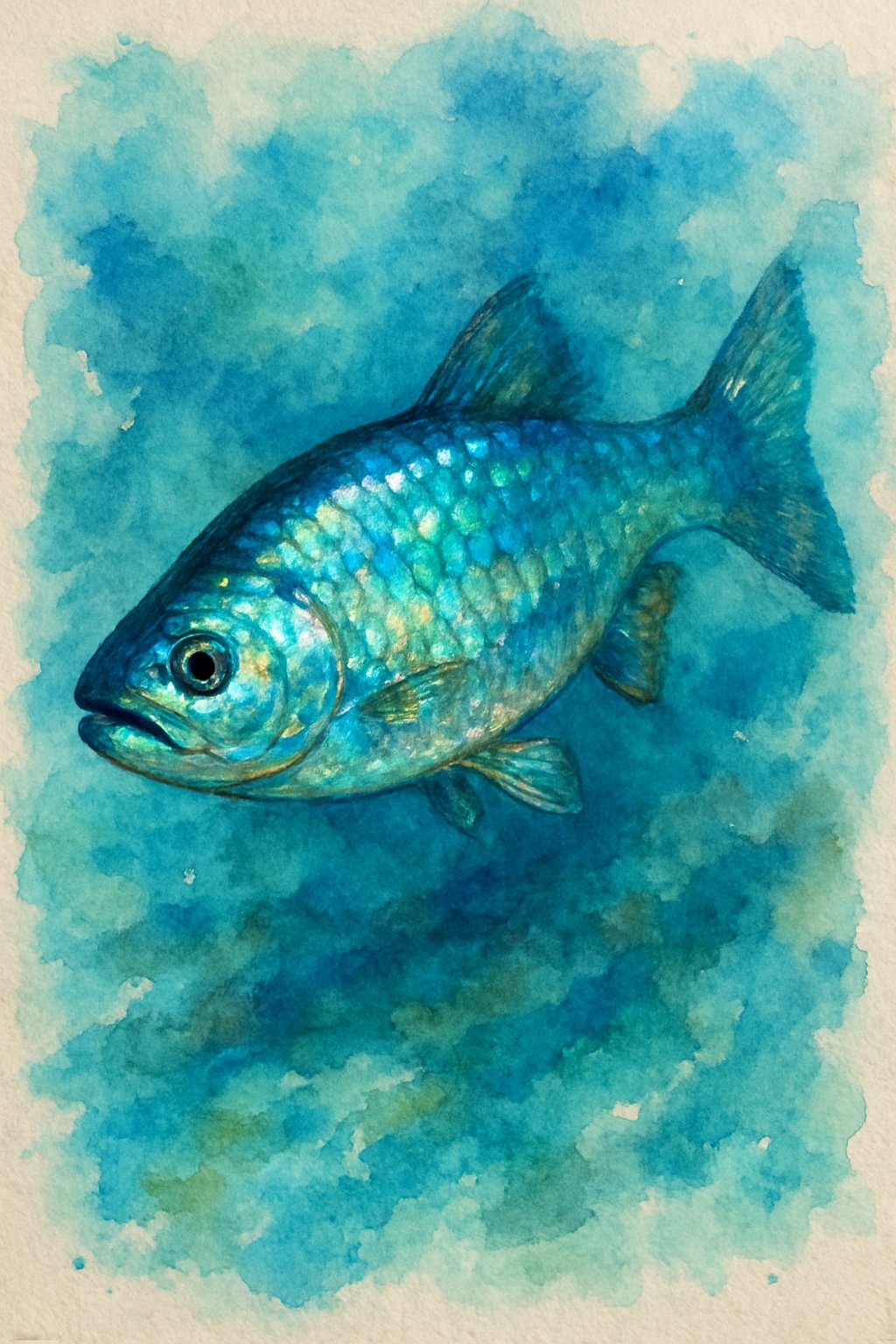
A clean, well-organized workspace boosts focus and helps handle metallic watercolor paints properly. Using high-quality, premium watercolor paper ensures the paint’s shimmer shows clearly. Proper paper preparation prevents warping and allows smooth paint flow.
Setting Up a Suitable Painting Environment
He or she should find a stable surface like a tabletop or use a tabletop easel to keep the paper steady. Good natural light or a daylight lamp helps to see the true colors and shimmer of metallic watercolor paints.
Organize essential supplies nearby: water jars, paper towels, and brushes of different sizes. Avoid clutter to prevent accidents with wet paint. Metallic paints can be sensitive to dust and debris, so a clean area is important to maintain smooth, even strokes.
A comfortable chair and good ventilation improve the experience, especially since some metallic paints may have strong odors. Keeping the workspace tidy also allows for easy drying of completed layers without disturbance.
Priming Watercolor Paper for Metallic Paints
Using high-quality watercolor paper is key since it holds water well and shows metallic paints’ shine better. Premium watercolor paper pads often have a thicker surface that prevents warping when applying watery metallic layers.
Before painting, the paper can be lightly stretched or taped to a rigid board. This keeps it flat and stops buckling during layering. Some artists prime the paper by lightly wetting the surface to allow smooth metallic paint flow.
Dark or black watercolor paper can enhance the metallic effect, making the shimmer pop. However, it needs a different approach because it absorbs light differently. Testing small areas first can help adjust paint consistency and layering techniques.
Preparing the paper correctly gives the metallic paints a surface to interact with, making the colors vibrant and reflective as intended.
Designing and Sketching Your Fish Composition
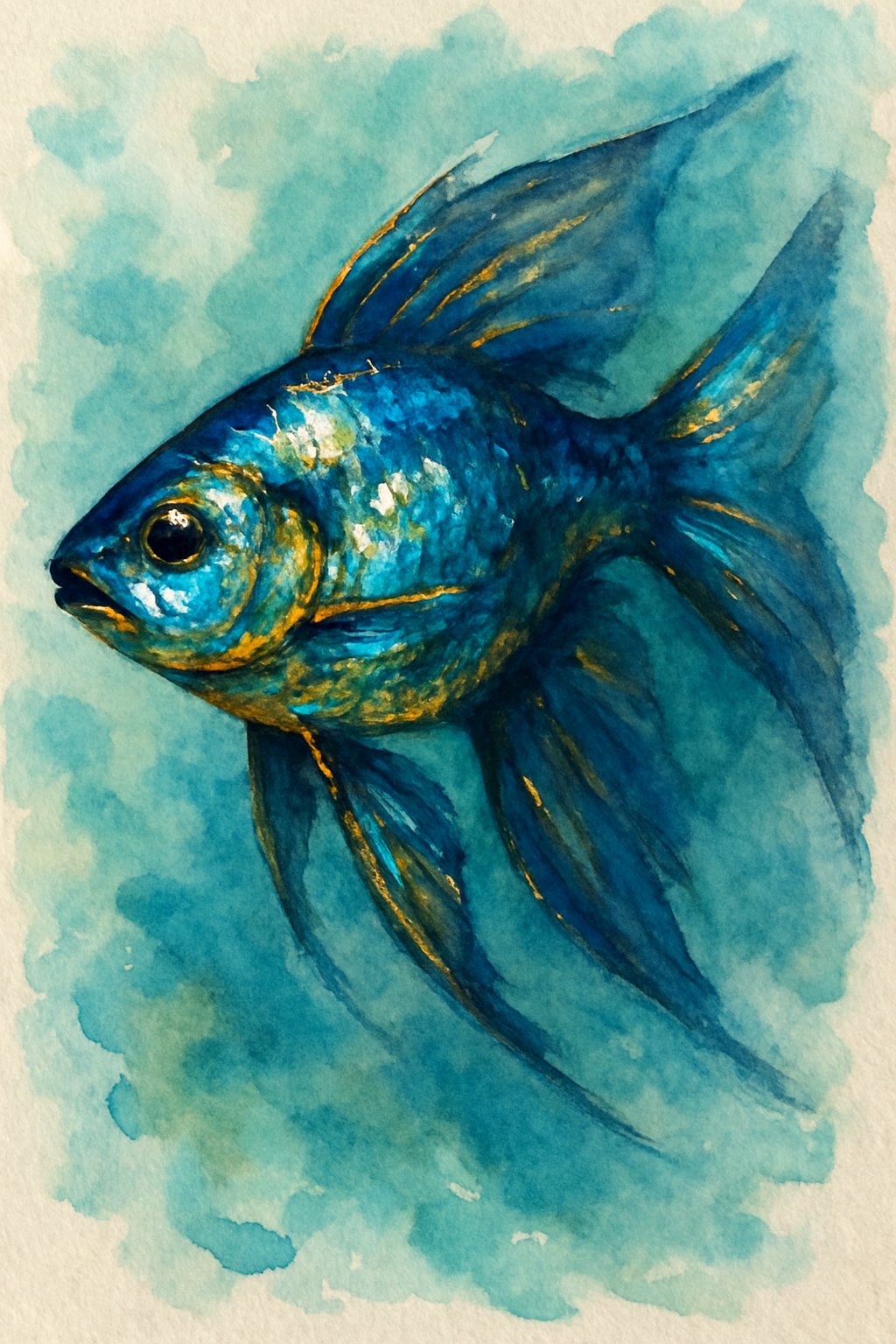
Starting a shimmering metallic watercolor fish painting requires careful planning. The choice of fish species influences the colors and shapes used. Placement of elements ensures a balanced composition. The next steps focus on selecting the right fish and accurately transferring the design to paper.
Selecting Fish Species and Element Placement
Choosing a fish species with interesting shapes and natural shimmer makes the painting more engaging. Exotic fish with unique scale patterns often work well because they highlight metallic accents.
Consider how the fish’s color palette will use vibrant colors and metallic paint. For example, bright blues and oranges paired with metallic gold or silver create contrast and depth.
Placement matters for flow and balance. Position fish to guide the viewer’s eye across the painting. Space elements to allow room for details like scales and fins, which will be enhanced later with fine detail paint brushes.
Sketch simple outlines first, focusing on the main body shapes and key features such as fins and eyes. Keep the composition clear and uncluttered.
Transferring the Design to Paper
After finalizing the fish shapes and placement, the design must be lightly sketched on watercolor paper. Use a pencil with a soft touch to avoid indenting the paper.
Work on high-quality watercolor paper that supports metallic paints and vibrant colors without warping. Masking fluid can protect areas that will stay white or have metallic details.
Sketch outlines should be minimal to allow for watercolor transparency. Fine detail paint brushes will later add texture and scale patterns, so leave room for these enhancements.
Use clean lines and adjust placement if needed before starting the actual painting. This precise transfer sets up the success of the shimmering and layered watercolor effects.
Layering Techniques for Shimmering Metallic Effects
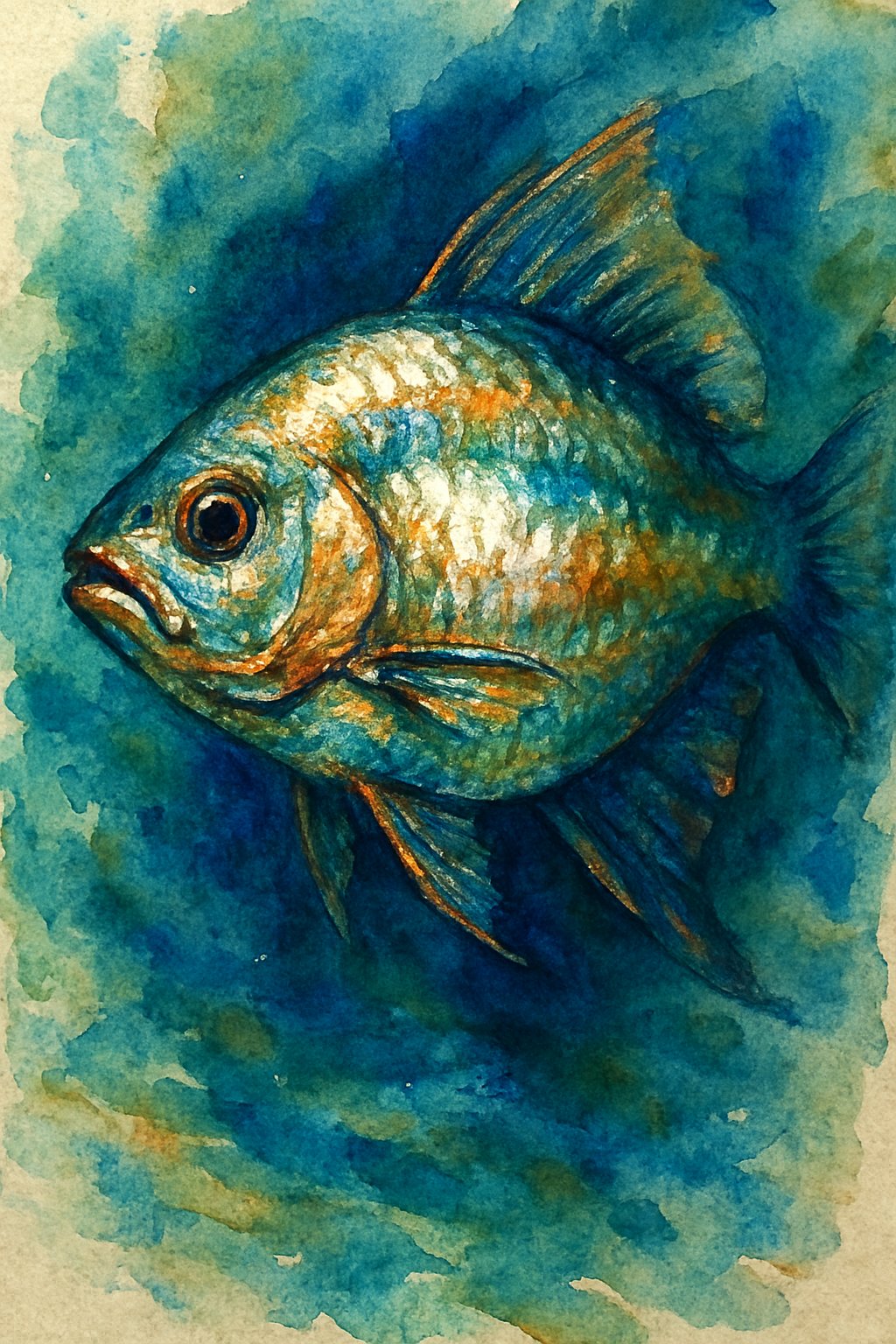
To create a rich metallic look, the artist works in stages. First, the base colors set the tone and overall shape. Then, metallic paints add shine and texture. Finally, blending these layers carefully creates smooth transitions between bright metallics and solid colors.
Applying Base Washes with Watercolors
The first step is applying a solid base wash using non-metallic watercolor paints. This layer forms the foundation for the fish’s colors and shapes. Artists often choose vibrant colors like deep blues, greens, or reds to reflect the natural hues of fish scales.
The wash must be even and smooth to help later metallic layers adhere well. It is important to wait for this base to dry completely before adding metallic paints. Thin water washes work best for smooth coverage. This coating sets the stage for metallic sheen without making it dull or uneven.
Building Up Metallic Shine and Highlights
Once the base is dry, the artist adds shimmering metallic colors from a metallic watercolor paint set. These paints contain tiny shimmering particles that catch light. Applying them in layers boosts metallic shine.
The artist targets spots where natural light would hit, like the edges of scales or raised fins. They start with light layers to keep transparency before adding thicker paint for brighter metallic highlights.
Using small, fine brushes allows detailed control. Sometimes mixing a bit of white gouache with metallics enhances the reflective effect. The goal is to create depth and realism by playing with light reflection on the fish.
Blending Metallic and Non-Metallic Colors
Blending helps soften the transition between shimmering metallic highlights and the solid base colors. When metallic paint is still damp, the artist lightly brushes nearby areas to merge edges. This avoids harsh lines between shiny and matte parts.
A damp clean brush works well to gently move paint without disturbing underlying layers. Careful blending makes the fish scales look more natural and three-dimensional.
Avoid overblending to keep the metallic shine distinct. The artist balances smoothness with clear metallic shimmer, preserving both vivid colors and bright reflections.
Adding Fine Details and Finishing Touches
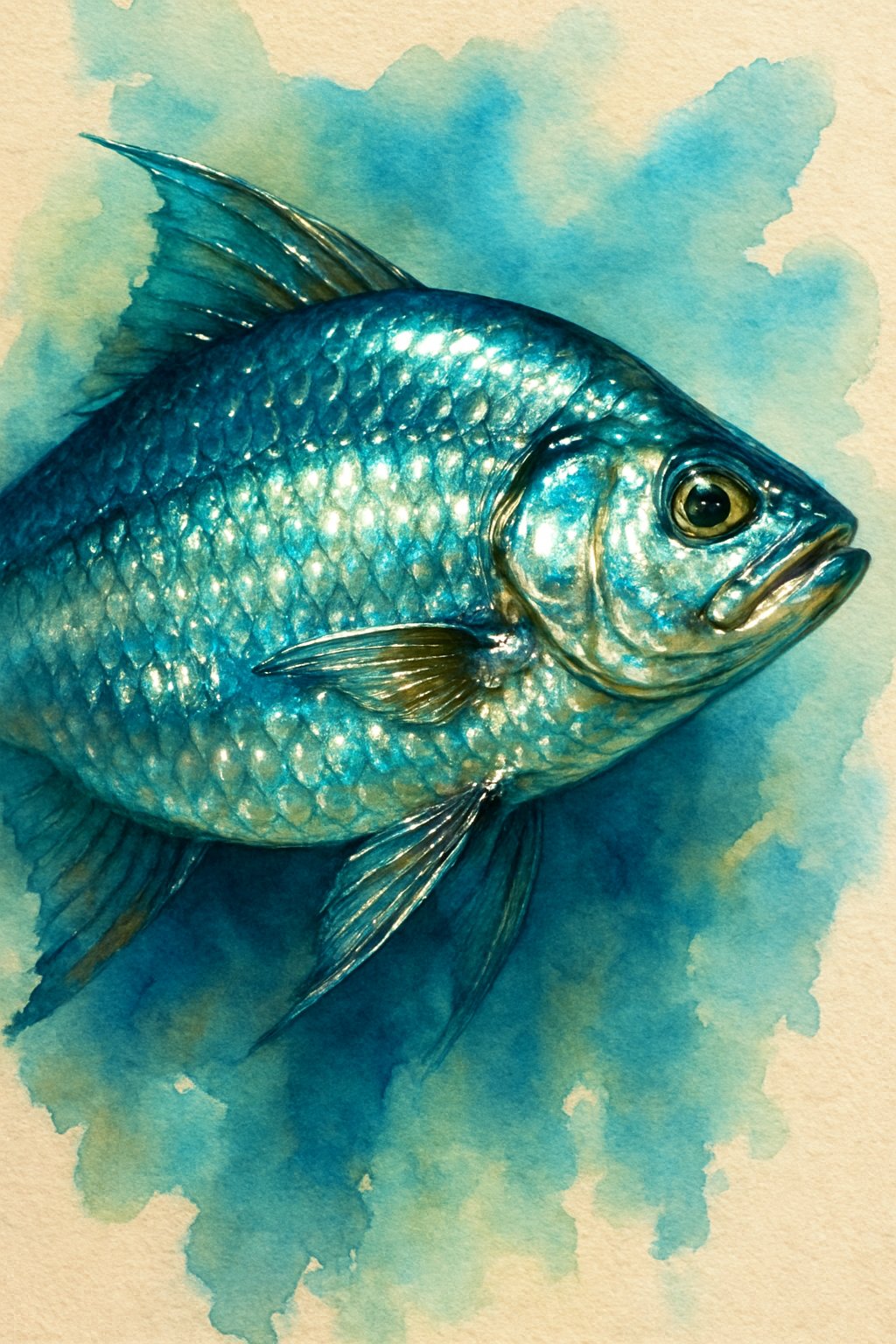
Detailed work with metallic watercolors brings a painting to life. Precision tools and careful layering help enhance texture, create depth, and emphasize light reflections. Proper use of brushes and metallic accents sharpens the overall effect.
Enhancing Fish Scales with Metallic Accents
To make fish scales shimmer, he should use a fine detail paintbrush set. Applying thin layers of metallic paint on individual scales creates a subtle shine without overpowering the base colors. A damp brush—not soaking wet—helps control the metallic effect and prevents paint from pooling.
He can vary the metallic hues slightly for a natural, iridescent look. Light layers of gold, silver, or bronze work well depending on the fish’s color scheme. Using small, precise strokes along the edges of scales emphasizes their texture and adds depth.
Creating Dynamic Backgrounds
The background sets the mood without stealing focus from the fish. He should choose softer, broader strokes with a larger watercolor brush to keep the metallic paint diffused and less intense. A gradient or wash using diluted metallic colors like pale blue or green can suggest underwater light.
Adding subtle splatters or dots with a detail watercolor brush can simulate bubbles or light reflections. These accents should remain faint to avoid distracting from the main subject but still contribute shimmer and interest.
Applying Final Highlights and Reflections
Final highlights bring shine and realism to the painting. Using a very fine detail brush, he should add metallic highlights to key areas such as the fish’s eyes, fins, and curved body parts where light naturally hits.
Small dots or thin lines of pure metallic paint enhance reflections and suggest wetness. These touches should be sparing and deliberate to maintain balance. Combining metallic highlights with careful glazing builds a polished, vibrant finish that draws the viewer’s eye.
Exploring Creative Styles and Advanced Tips
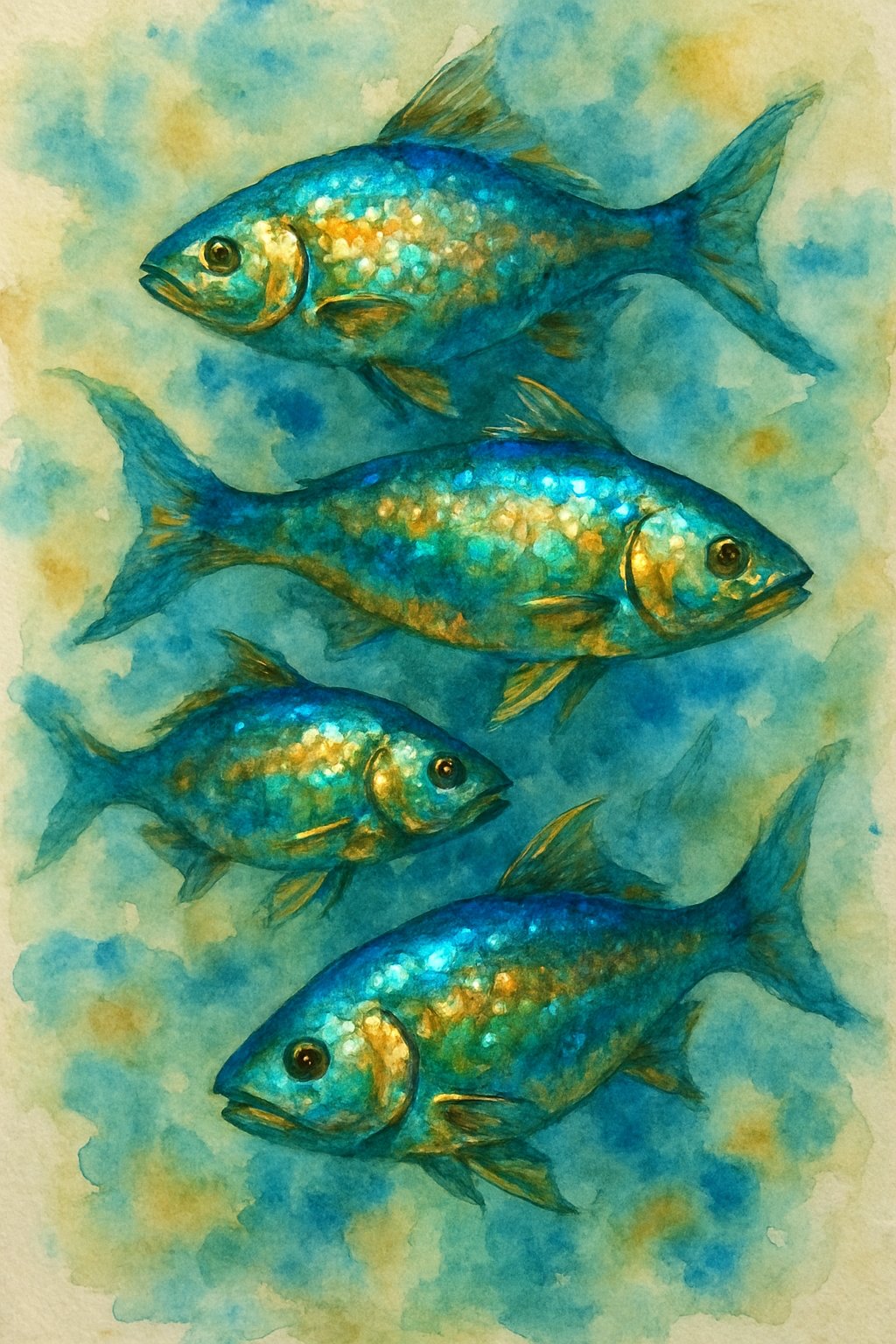
Creative techniques can add depth and uniqueness to a metallic watercolor fish painting. Using patterns, lettering, and proper care for materials enhances both the look and durability of the artwork. Skilled application is key to making metallic effects stand out without overpowering the design.
Incorporating Metallic Mandalas and Patterns
Adding metallic mandalas or geometric patterns around the fish creates a striking contrast. Metallic paints reflect light differently on smooth versus textured paper, so choosing the right surface matters. Artists often sketch mandalas lightly in pencil before applying metallic watercolor to maintain precision.
Using fine detail brushes helps achieve sharp edges in complex designs. Layering metallics over light washes can highlight shapes. Variation in brush stroke size can diversify pattern thickness, enriching the visual effect.
Metallic mandalas also work well combined with subtle washes to keep the fish as the painting’s focus. Balancing intricate metallic details with negative space prevents the image from becoming too busy.
Experimenting with Calligraphy and Lettering
Metallic inks and brush pens add elegant details when used for calligraphy on or around the fish. Artists can write names, quotes, or titles to personalize the painting. Calligraphy brush pens offer control for thick and thin strokes, enhancing visual interest.
Using metallic inks in lettering requires a steady hand to avoid smudging on wet watercolor paper. Dry layers before writing, or use smooth paper designed for ink.
Combining calligraphy with watercolor fish designs can create dynamic compositions. Painting lettering in metallic tones draws the eye and complements the fish’s shimmer.
Care and Maintenance of Metallic Painting Supplies
Metallic watercolors and inks need careful storage to maintain their quality. Tight-fitting lids prevent paints and inks from drying out. Brushes with synthetic bristles are often best for metallic paints to keep fine tips in good condition.
Cleaning brushes gently but thoroughly after use avoids pigment buildup, which can dull metallic shine. Using lukewarm water and mild soap is recommended.
Paper should be stored flat and dry to prevent warping or damage to metallic layers. Protect finished paintings from direct sunlight to avoid fading. Proper care extends the life of expensive metallic supplies and preserves artwork brilliance.
Frequently Asked Questions
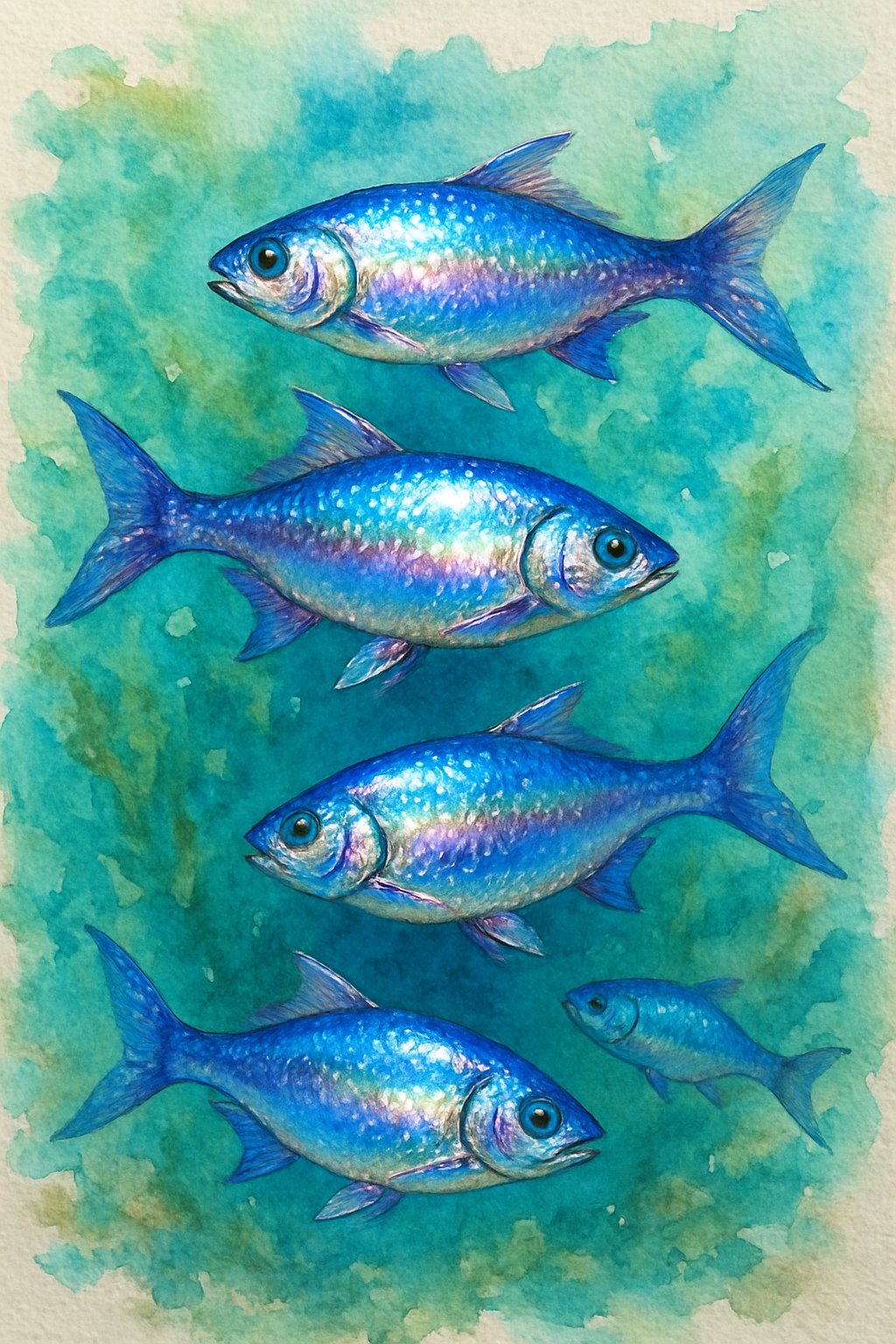
This section covers the essential supplies needed for metallic watercolor fish paintings, tips to create shimmering effects, and clear steps beginners can follow. It also explains how to blend colors smoothly, make the painting vibrant and realistic, and avoid common mistakes.
What materials do I need to start painting with metallic watercolors?
He or she will need metallic watercolor paints, watercolor paper, a variety of brushes including fine detail ones, water containers, and napkins or cotton fabric for blotting. A palette for mixing colors and clean water for rinsing brushes are also important.
How do I achieve a shimmering effect in a watercolor fish painting?
Using metallic watercolors alone adds shine. To enhance shimmer, apply several light layers instead of one thick coat. Positioning the painting under different lights helps the metallic pigments reflect and sparkle naturally.
Can you provide step-by-step instructions for a beginner painting a metallic fish?
Start by sketching the fish outline lightly on watercolor paper. Wet the paper slightly and apply base colors. Once dry, add metallic watercolor layers to highlight scales and fins. Use fine brushes for details and blend edges softly for a natural look.
What are the best techniques for blending colors in a metallic watercolor painting?
Wet-on-wet blending works well to create smooth transitions. Apply one color and while it is still wet, add another color next to it, allowing them to mix gently. Avoid overworking to keep the shimmer intact and prevent dullness.
How can I ensure my watercolor fish painting looks realistic yet vibrant?
Use contrast by combining light and dark areas. Apply metallic paints sparingly to highlight scales and reflective parts. Keeping edges soft and colors layered will add depth without losing vibrancy.
What are some common mistakes to avoid when painting with shimmering metallic watercolors?
Avoid using too much water, which can wash out shimmer. Do not overblend metallic paints, as this reduces their reflective qualities. Always clean brushes well to prevent color mixing and keep metallic pigments bright.
